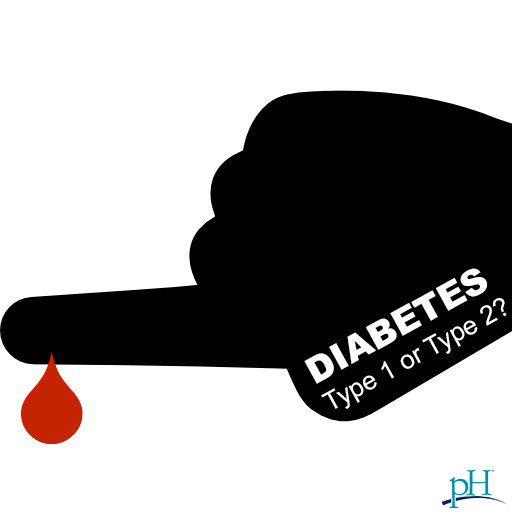Diabetes: What’s your ‘type’?
11 years ago | Diabetes
By pH health care professionals
Diabetes is described as a metabolic disorder in which the body cannot properly store and use glucose (a type of sugar) used by the body for energy. To use glucose, the body needs insulin. Insulin is a hormone made by the pancreas. Insulin stimulates the removal of glucose from the blood and its uptake into muscle, liver and fat cells where it can be stored for energy. In other words, insulin is important for regulating blood glucose levels.
Sometimes the body does not make enough insulin or the insulin does not work the way it should. The end result is glucose stays in the blood and does not reach the cells (muscle, liver and fat cells) and the level of glucose in the blood gets too high, a condition known as hyperglycemia. This condition may lead to diabetes.
What is the difference between Type 1 and 2 diabetes?
In simple terms, when the body makes too little or no insulin, this is called Type 1 diabetes, or insulin-dependent diabetes. When the body cannot properly use the insulin it makes, this is called Type 2 diabetes, or non-insulin-dependent diabetes.
What causes Type 1 or Type 2 diabetes?
Type 1 diabetes may arise when the pancreatic beta cells, which produce insulin, are destroyed by the immune system. When the immune system attacks healthy tissue, this is called an autoimmune disorder. Approximately 5-10 percent of people with diabetes have Type 1.
Type 2 diabetes occurs when the cells do not respond to insulin that is being made at the proper levels (insulin resistance). Type 2 diabetes accounts for approximately 90-95 percent of diabetes cases and is usually associated with older age, obesity, physical inactivity, family history of Type 2 diabetes, or a personal history of gestational diabetes.
Type 1 diabetes has a rapid onset, whereas Type 2 diabetes has a slower onset and may take years to develop.
What are the risks associated with diabetes?
There are numerous medical consequences of constantly high levels of glucose in the blood. The most serious involve kidney failure, eye problems (blindness), nerve damage and increased risk of cardiovascular problems (e.g., heart attacks and stroke).
How do you get diagnosed?
A doctor may request some of the following tests to determine whether you have diabetes:
- Hemoglobin A1C, HbA1c, or Glycohemoglobin Test (6.5 or above )
- Fasting Plasma Glucose (FPG) Test (126 mg/dl or above)
- Random Plasma Glucose (RPG) Test (200 mg/dl or above)
- Oral glucose tolerance test (OGT) Test (200 mg/dl or above)
Enjoy Your Healthy Life!
The pH professional health care team includes recognized experts from a variety of health care and related disciplines, including physicians, attorneys, nutritionists, nurses and certified fitness instructors. This team also includes the members of the pH Medical Advisory Board, which constantly monitors all pH programs, products and services. To learn more about the pH Medical Advisory Board, click here.








Comments (1)
Guest
I have type 2 and would like to know what more can i do to prevent damage. I do take metformin and glipazide